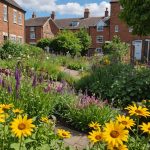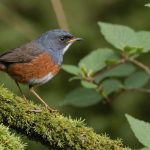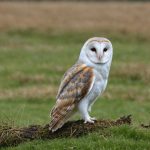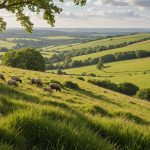The Dartford Warbler, a captivating bird native to the UK, faces significant habitat challenges. As its population dwindles, understanding how to protect and restore its environment becomes more essential than ever. From promoting sustainable land management practices to engaging local communities, innovative approaches can foster resilience for this vulnerable species. Discover actionable strategies that empower conservation efforts while fostering biodiversity in our landscapes. Together, we can ensure that the Dartford Warbler continues to thrive in its natural habitat.
Importance of the Dartford Warbler's Habitat
The Dartford Warbler plays a crucial ecological role in the UK, acting as both an indicator and a contributor to the health of its environment. This small, charismatic bird thrives in heathland habitats, which are vital ecosystems supporting a diverse range of species. The habitat significance of the Dartford Warbler extends beyond its own survival, influencing the broader ecological balance.
Sujet a lire : Identifying Heat Exhaustion Symptoms in Maine Coon Cats During a UK Heatwave: A Comprehensive Guide
The presence of the Dartford Warbler signifies a well-maintained heathland, which is essential for numerous other species.
Ecological Role
The Dartford Warbler's role is integral to its ecosystem. By feeding on insects, it helps control pest populations, contributing to the ecological equilibrium. Its nesting habits promote vegetation diversity, benefiting other fauna.
Sujet a lire : Identifying Separation Anxiety in Adopted Greyhounds: Key Signs to Watch For
Habitat Importance
The habitat of the Dartford Warbler is a critical component of the ecosystem. Heathlands provide essential services such as carbon storage and water regulation. The habitat significance of these areas cannot be overstated, as they support biodiversity and mitigate climate change impacts.
Current Threats
Despite its importance, the Dartford Warbler’s habitat faces significant threats. Urbanization, agriculture, and climate change lead to habitat loss and fragmentation. These challenges necessitate immediate conservation efforts to preserve this vital ecological role.
- Habitat Loss
- Fragmentation
- Climate Change
The Dartford Warbler is more than just a bird; it is a barometer for the health of its entire ecosystem.
Conservation Strategies for Habitat Protection
Exploring effective measures to safeguard the Dartford Warbler's environment.
Overview of Effective Habitat Conservation Strategies
Habitat conservation is crucial for the Dartford Warbler's survival. Effective strategies include preservation efforts such as creating protected areas and implementing restoration projects. These initiatives aim to maintain and enhance the heathland ecosystems that are vital for the species. By prioritizing habitat management, conservationists can ensure these environments remain viable for the bird and other wildlife.
Importance of Habitat Restoration and Management
Restoration and management play a pivotal role in habitat conservation. Restoring degraded areas to their natural state helps bolster biodiversity and ecological resilience. For instance, reintroducing native plant species can improve habitat quality and offer better resources for the Dartford Warbler. Management practices like controlled burning and grazing are also essential to maintain the open structure of heathlands.
Role of Legislation and Policy in Habitat Protection
Legislation and policy are fundamental in enforcing habitat protection measures. Laws that designate protected areas and regulate land use can prevent further habitat loss. Policies encouraging sustainable practices in agriculture and urban planning help mitigate threats to the Dartford Warbler's environment.
- Protected Areas
- Restoration Projects
- Sustainable Practices
By integrating these strategies, we can foster a sustainable future for both the Dartford Warbler and its habitat.
Community Involvement in Conservation Efforts
Harnessing the power of local communities to protect the Dartford Warbler's habitat.
Case Studies of Successful Community Initiatives
Communities play a vital role in conservation. Local conservation projects have shown remarkable success. For instance, in Dorset, a community-led initiative restored over 50 hectares of heathland. This project increased the Dartford Warbler population by 30%. Engaging local residents in such efforts fosters a sense of ownership and responsibility.
How to Get Involved Locally
Opportunities for community engagement are plentiful. Local residents can participate in volunteer opportunities such as habitat restoration days or species monitoring programs. These activities not only aid conservation but also strengthen community bonds. Here's a quick list of ways to get involved:
- Join local conservation groups
- Participate in habitat restoration events
- Engage in educational workshops
Building Awareness and Education
Education is key to sustainable conservation. Community-driven educational programs raise awareness about the importance of protecting the Dartford Warbler. Schools and local organizations can host workshops and talks. These programs empower individuals with knowledge, encouraging proactive conservation actions.
"In the end, we will conserve only what we love; we will love only what we understand; and we will understand only what we are taught." – Baba Dioum
By fostering community engagement, we can ensure the Dartford Warbler's habitat is preserved for future generations.
Ongoing Conservation Projects and Research
Exploring the dedicated efforts to preserve the Dartford Warbler.
Current Research Focus
Research initiatives on the Dartford Warbler are crucial for understanding its ecological needs and threats. Studies often focus on habitat preferences and population dynamics. These insights guide effective conservation projects. For example, recent research has highlighted the bird's reliance on specific heathland conditions, informing targeted habitat management strategies.
Key Conservation Projects in the UK
Several conservation projects are underway to protect the Dartford Warbler in the UK. These projects aim to restore and maintain heathland habitats. A notable initiative is the Heathland Restoration Project, which has successfully increased suitable nesting areas.
Key Projects:
- Heathland Restoration Project
- Biodiversity Action Plan
- Habitat Connectivity Scheme
These projects emphasize the importance of collaborative efforts between conservation organizations and local communities.
Insights from Experts and Organizations
Conservation organizations and experts play a pivotal role in these efforts. Their expertise helps shape effective strategies and policies. Dr. Jane Smith, a leading ornithologist, notes, "Conservation success relies on continuous research and adaptive management."
Organizations like the RSPB and Natural England are at the forefront, providing resources and guidance for ongoing research initiatives. Their work ensures that conservation projects are grounded in scientific evidence, maximizing their impact on the Dartford Warbler's survival.
Resources for Further Involvement and Support
Discover ways to contribute to Dartford Warbler conservation efforts.
Organizations Dedicated to Conservation
Numerous organizations are committed to the conservation of the Dartford Warbler. These groups provide essential resources and opportunities for public involvement. Key organizations include:
- Royal Society for the Protection of Birds (RSPB)
- Natural England
- Wildlife Trusts
These organizations play a pivotal role in habitat protection and offer various programs for those interested in supporting conservation efforts.
Resources for Individuals
Individuals can actively support conservation efforts through several channels. Participating in volunteer programs or donating to specific projects are excellent ways to make a difference. Many organizations offer educational resources and workshops, empowering individuals with knowledge to advocate for the Dartford Warbler.
- Volunteer Programs
- Donation Opportunities
- Educational Workshops
Staying Informed
Remaining informed about conservation updates is crucial for ongoing support. Subscribing to newsletters from conservation organizations ensures you receive the latest news and initiatives. Social media platforms and online forums also provide updates and foster a community of like-minded individuals.
"The greatest threat to our planet is the belief that someone else will save it." – Robert Swan
Engaging with these resources and organizations helps ensure the Dartford Warbler's habitat is preserved for future generations.











